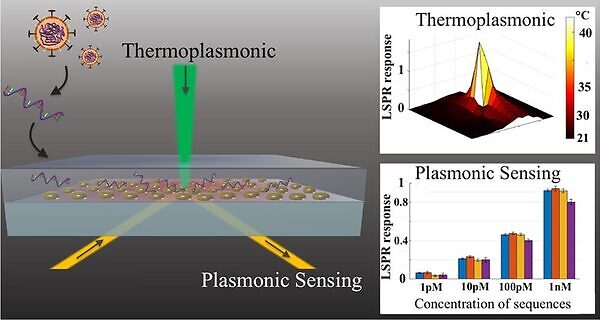Virtual Seminar"Fighting the invisible enemy – technologies for airborne pollutants" Jing Wang

Date
Location
Description
Micro/Bio/Nanofluidics (Shen) Unit would like to invite you to the virtual seminar by Prof. Jing Wang on November 2 (Monday).
----------------------------------------------------------------------
Date: Monday, November 2, 2020
Time: 16:00-17:00
**Zoom session
----------------------------------------------------------------------
Join Zoom Meeting
https://oist.zoom.us/j/96825178397?pwd=bjV0SkJKeGtCbFpIK09WSXRSOGpFdz09
Meeting ID: 968 2517 8397
Passcode: 493185
Speaker:
Prof. Jing Wang
ETH Zurich/Empa
Title:
Fighting the invisible enemy – technologies for airborne pollutants
Abstract:
The tiny invisible airborne pathogens, especially viruses, bacteria and their components, may cause health impacts even with minute amount. My group has developed a localized surface plasmon resonance biosensor for quantitative total bioaerosol detection (Qiu et al., ES&T 2020). We further developed a dual-functional plasmonic sensor for SARS-CoV-2 (Qiu et al., ACS Nano 2020). The virus sensor can serve as an alternative to the standard PCR (polymerase chain reaction) methods for COVID-19 diagnosis, but more prominently, may provide fast and continuous monitoring of the ambient viruses. My group devoted much effort to health impact of ambient particulate matter (PM), especially the biological components in the PM (Li et al. Atm. Env. 2019, Li et al. ES&T 2018, Yue et al. ES&T 2018). A major theme in these works is that the use of sole PM mass concentration for air quality assessment overlooks contributions of the health-related components such as the biological components, metals, soot, hazardous organics, and their size distributions. Thus improved air quality control needs to consider the toxicity factor of location-specific PM. I will discuss antibacterial strategies such as using chemically and electrically functionalized nanofiber membranes (Zeng et al. Adv. Mat. 2020, Sun et al. Build Environ, 2020).
The electrocatalytic reduction of carbon dioxide (CO2) powered by renewable electricity represents an option to reduce ambient CO2 concentration and produce renewable carbon-based feedstock and synthetic fuels. We developed elegant coating methods on nanofibers to achieve conductive membranes (Jiang et al. Adv. Elec. Mat. 2020) and used them as gas diffusion electrodes for CO2 reduction, which was achieved at the gas-electrolyte interface. The use of gaseous CO2 as feedstock alleviates mass transport limitations, resulting in high partial current densities above 100 mA·cm-2 (Ju et al. Adv. Energy Mat. 2019). We 3D-printed aerogel membranes for a thermal transpiration gas pump capable of driving airflow from cold side to hot side. With MnO2 catalysts, dual functions of thermal transpiration driven gas flow and degradation of volatile organic compounds were achieved by visible light irradiation (Zhao et al. Nature, 2020).
Host:
Prof. Amy Shen
Subscribe to the OIST Calendar: Right-click to download, then open in your calendar application.



